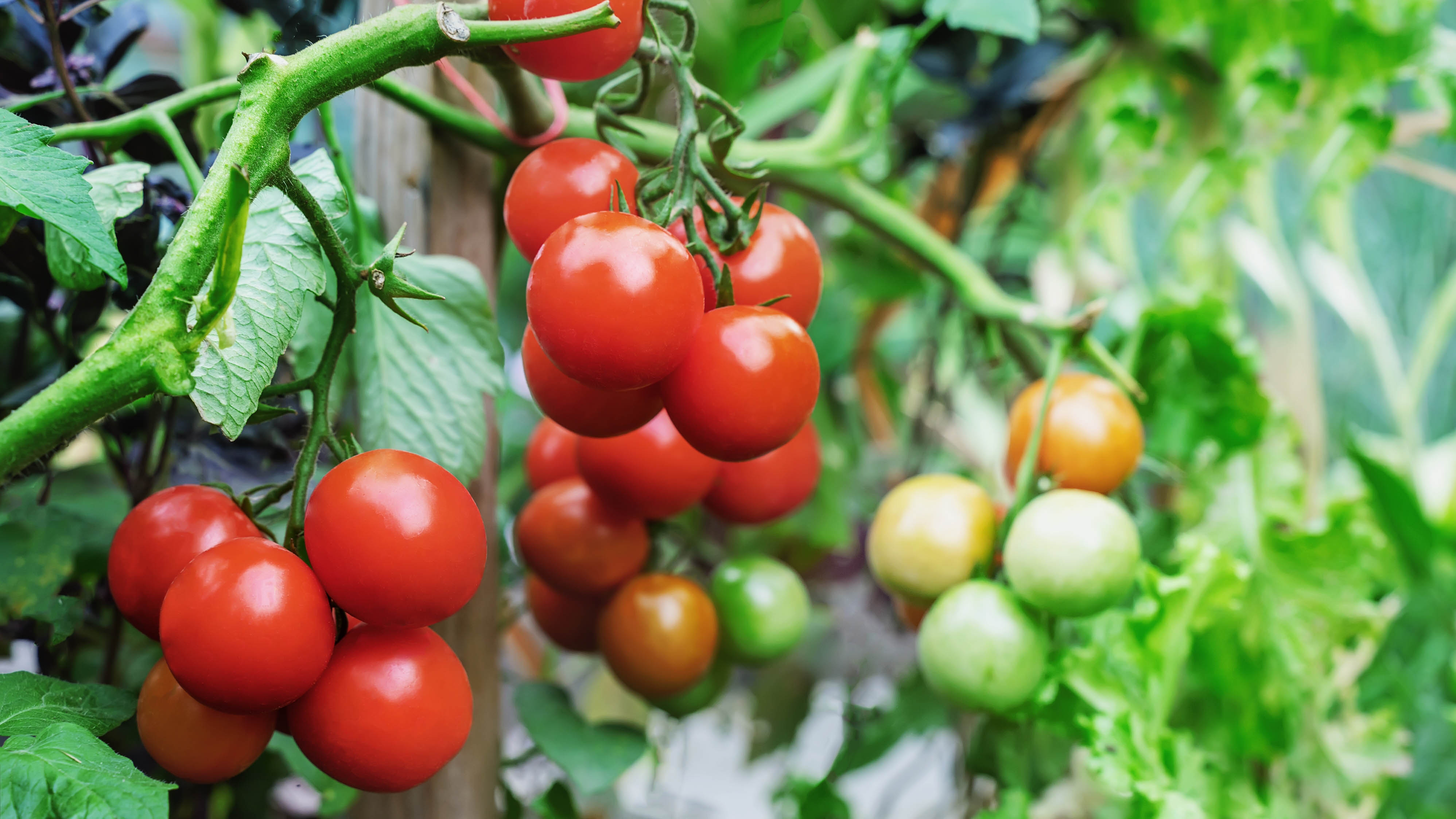
Giving your tomato plants a cosy winter retreat, also referred to as “overwintering”, isn't just a fancy gardening trick — it's like tucking in your favourite green buddies for a nap.
It might not come as a surprise that these salad favourites aren't big fans of the frost, so overwintering them means they’ll have a better chance of surviving when the temperatures plummet during winter. This way, they’ll wake up ready to take centre stage in your garden again once the cold snap takes its leave.
So, if you are hoping to overwinter your tomato plants and want to know what’s involved and how to go about it, here are seven tips from the experts to help you do just that.
1. Choose the right variety
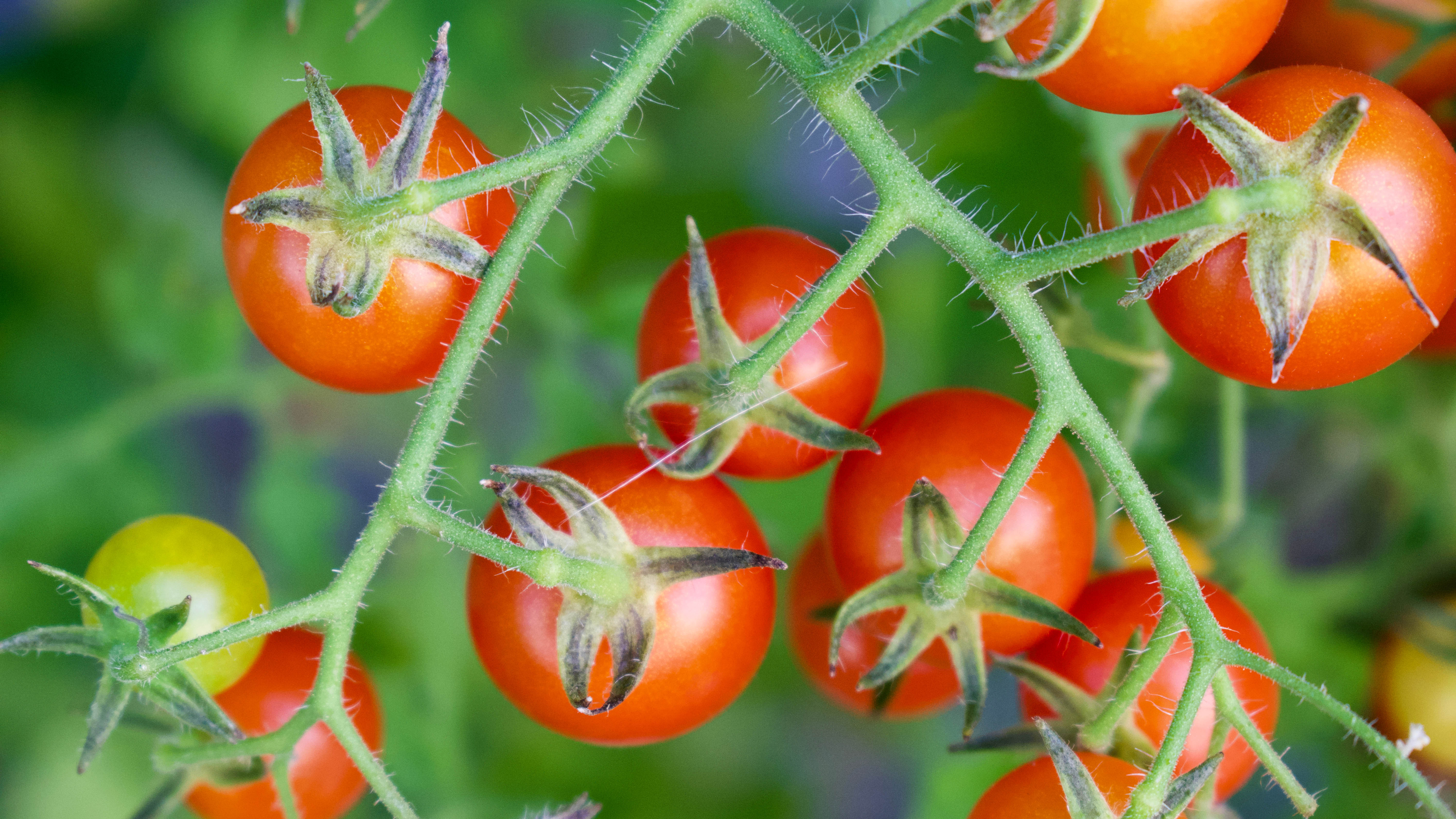
If you haven’t got your tomato plants yet, one thing to take note of is that not all tomato varieties are suitable for overwintering.
“Choosing the right varieties of tomato plant plays a critical role in successfully overwintering them,” explains BBC Gardeners’ World presenter and gardening expert at Stannah, Mark Lane, “Always remember that they are native to South America and if temperatures drop below 10 degrees Celsius (which is definitely the case in some countries) the tomato plant will struggle to thrive.
“It is therefore essential to create a warm and sheltered environment that mimics their natural habitat.”
Choose determinate or dwarf varieties as they tend to adapt better to indoor conditions. Determinate varieties include Patio, Tiny Tim and Balcony.
2. Location, location, location
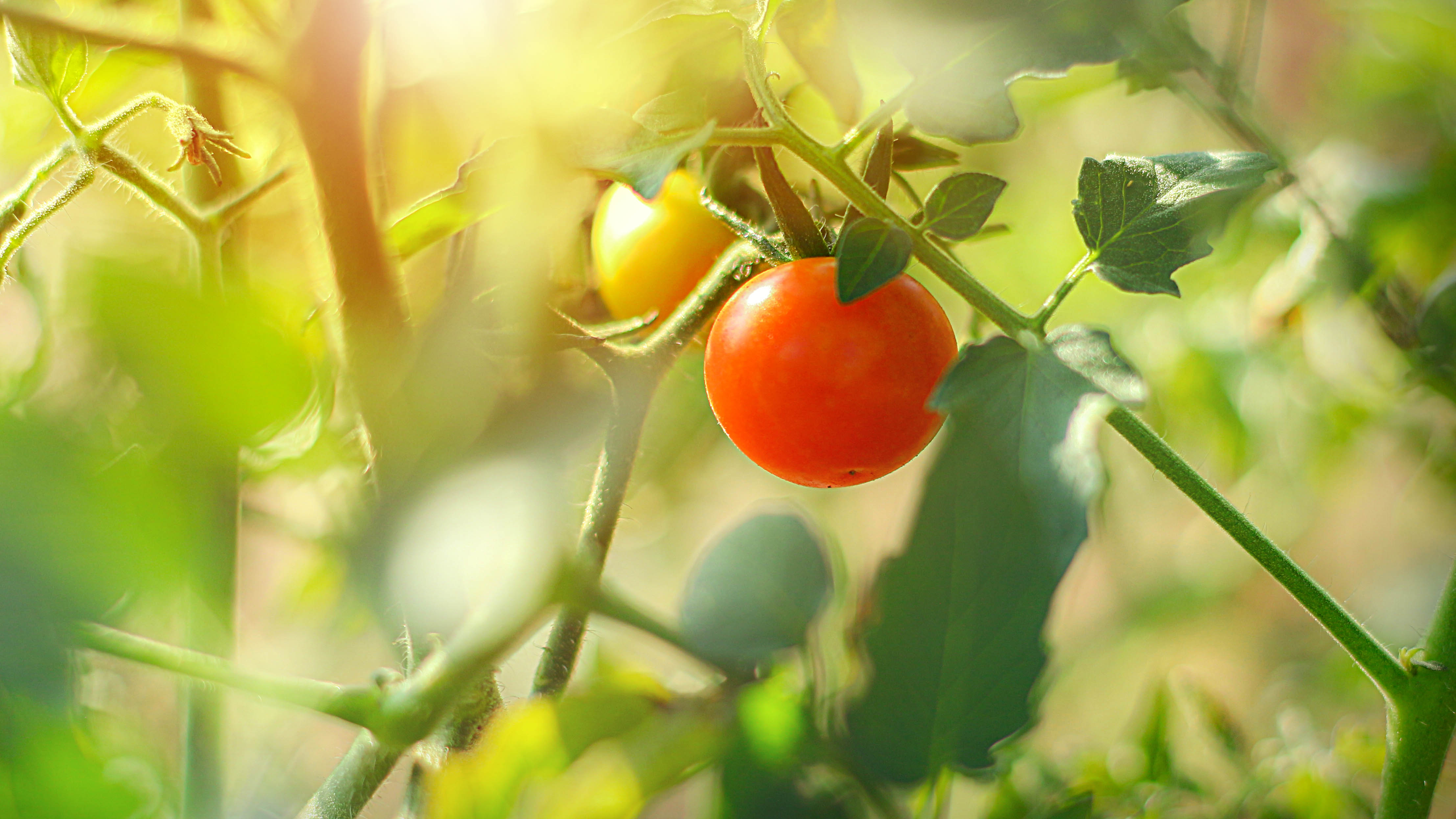
When overwintering your tomato plants, ensure that you select a location that receives a lot of direct sunlight throughout the day. Andrew White from Rhino Greenhouses Direct recommends using a greenhouse as this is the ideal way to overwinter tomatoes, however, “a conservatory or south-facing window may also offer adequate levels of light”, he says.
3. Go potty
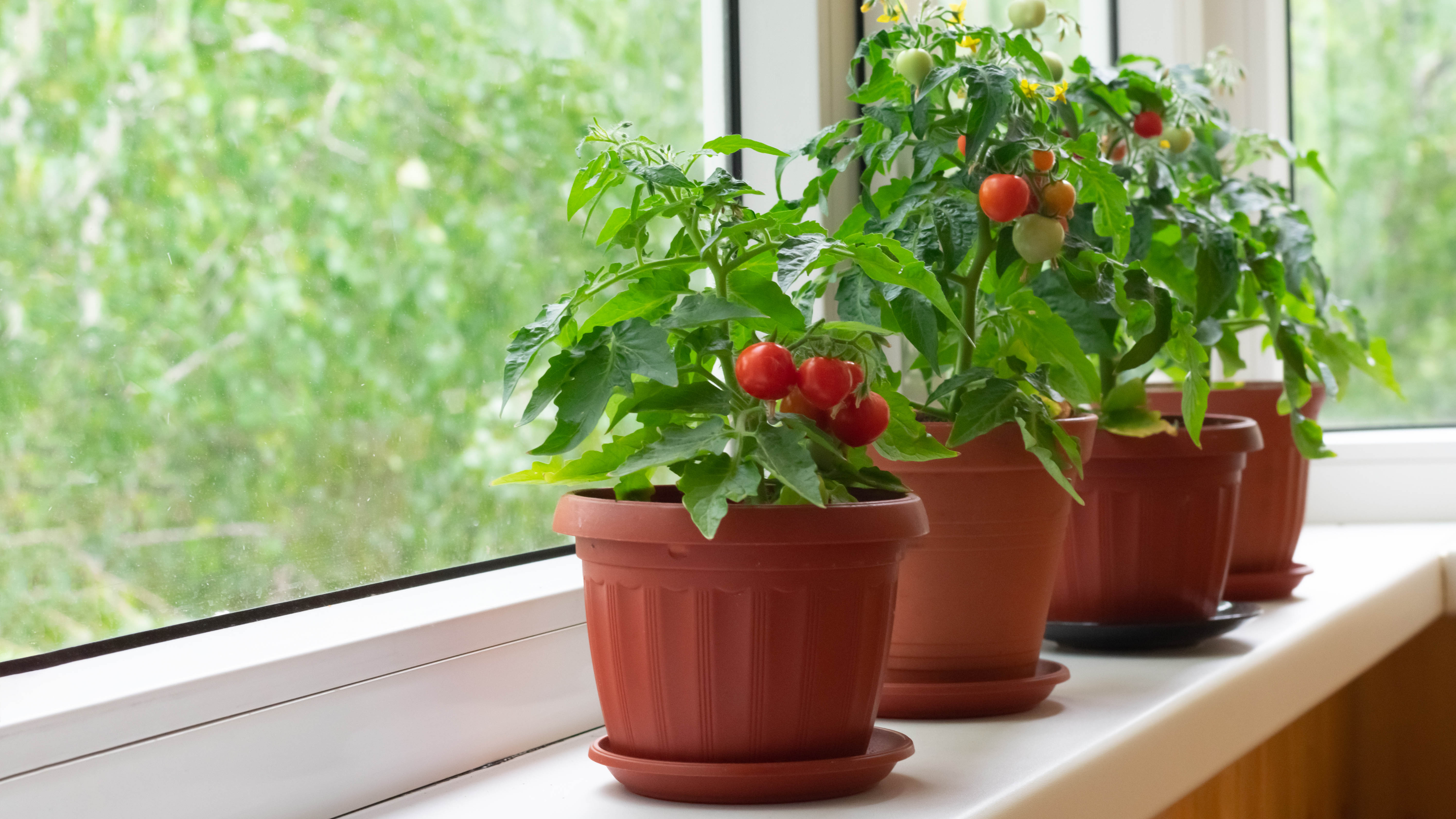
If your tomato plants are in the ground, consider transplanting them into pots. This makes it easier to bring them indoors.
“Transition should be done with care to minimise shock to the plants,” warns Lane.
When repotting, he recommends using large clean, sterilised containers with good drainage and high-quality peat-free multi-purpose compost.
“Make sure they are large enough to accommodate the root system,” he adds. “Don’t be tempted to try and squeeze large roots into a small pot — this will be detrimental to the plant’s survival.
“Also ensure the pots have drainage holes to prevent waterlogged soil, which can lead to root rot.”
For step-by-step guidance, here's how to grow tomatoes in pots — 7 easy steps.
4. Prep and prune
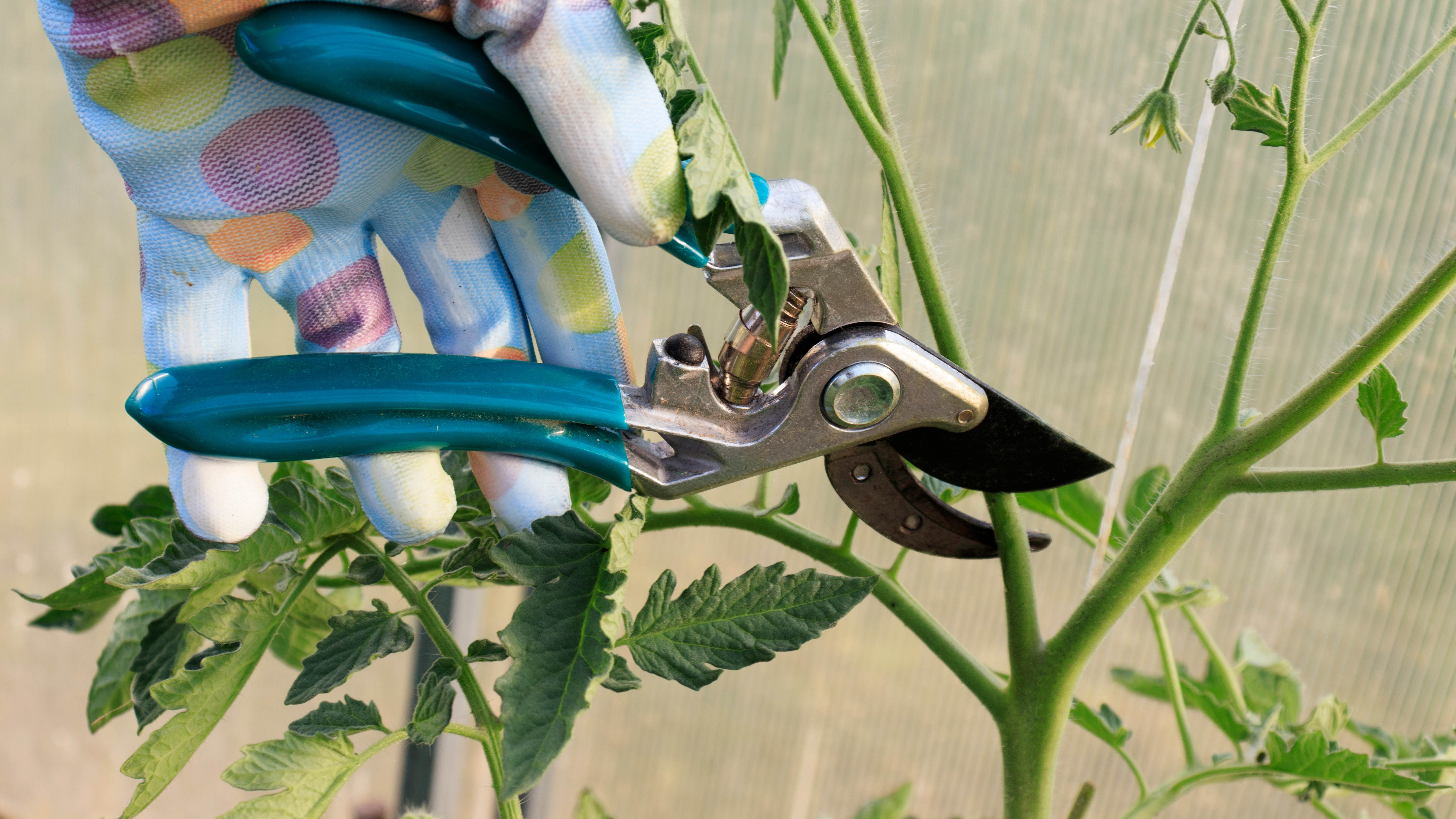
Preparing your tomato plant for overwintering is crucial to the health of your plant overwinter. Before bringing your plants indoors, ensure that your tomato plant is healthy and remove any leaves that show signs of infection or pests. This will help reduce the risk of diseases spreading.
“Pruning indoor tomatoes is essential to control their growth and maximise fruit production,” advises Lane. “Remove any suckers that develop between the main stem and branches.”
Do this again before taking them back outside in spring once the frost has lessened and the temperatures begin to rise, says Waters.
“By pruning your plants before replanting them outside, it encourages your tomato plant to produce healthy new growth in the spring,” he adds.
For tips, check out how to prune tomato plants in 3 easy steps.
5. Never too mulch
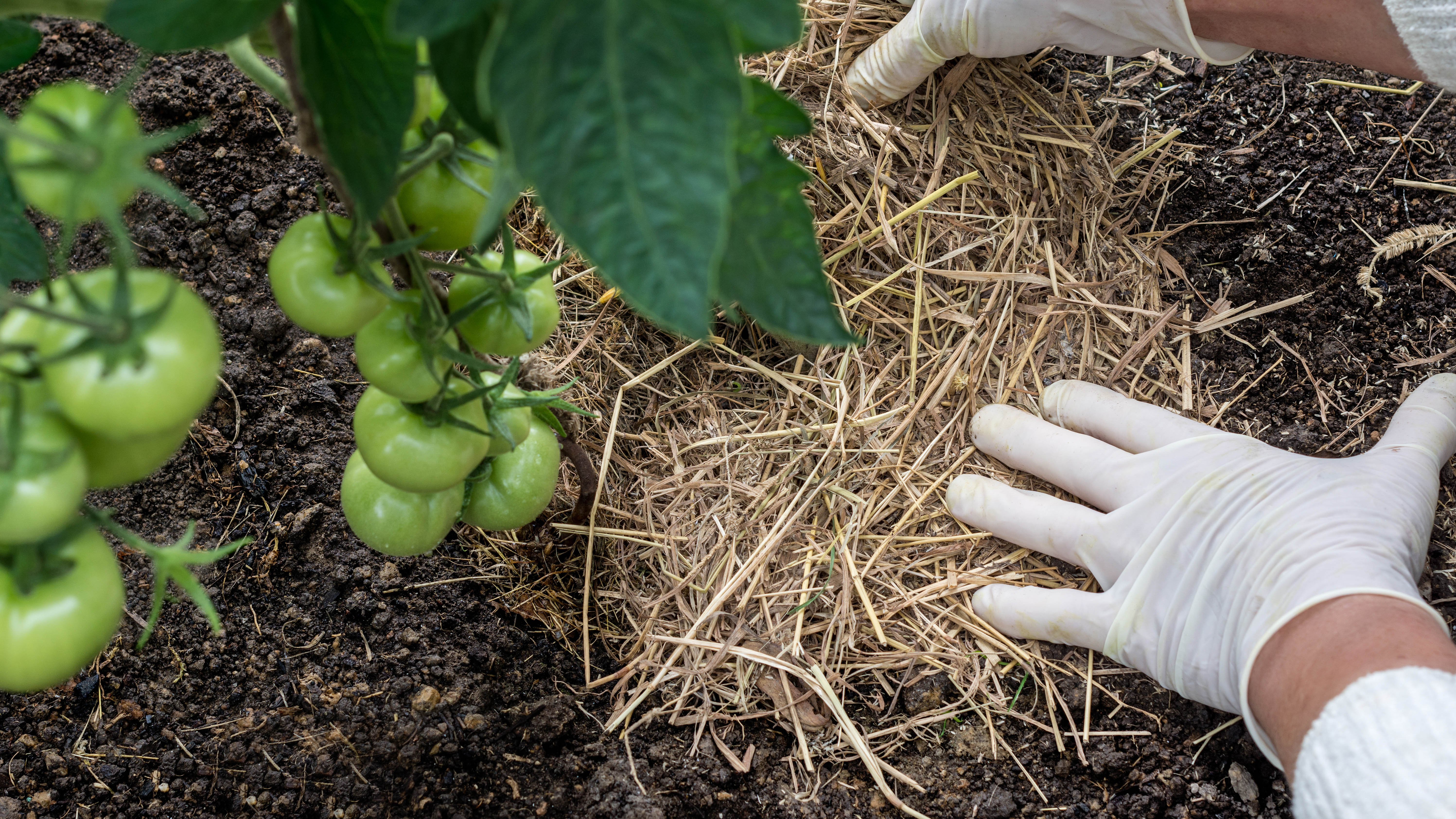
Wherever you decide to keep your tomato plants, ensure that you apply a thick layer of mulch around the base of the stems.
“Mulch will help your tomato plant regulate the temperature of the soil, conserve moisture and help protect the roots from frost,” explains White.
6. Plenty of light

Tomatoes require at least 10 to 12 hours of light daily to thrive so it's essential that you place your tomato plants in a location with plenty of sunlight.
“You may need to use grow lights to supplement natural light, especially over the winter,” says Lane. “LED grow lights are energy-efficient and can provide the spectrum of light required for optimal growth.”
7. Just the right temperature

Tomato plants, like most of us in winter, cannot handle the frost and need to be kept at an adequate temperature throughout winter to remain healthy.
Lane recommends maintaining a temperature between 13 and 24°C while avoiding exposing them to drafts.
“To increase humidity, place a tray filled with water and pebbles near the plants,” he says. “As the water evaporates, it will create a microclimate with increased humidity around the tomatoes.”
If you’re using a greenhouse, Waters suggests purchasing additional heating equipment such as greenhouse heaters for when temperatures plunge in the depths of winter.
8. Easy on the water

Indoor plants need less water than outdoor ones so be mindful not to overwater your tomato plants. Doing so can cause root rot and other diseases.
“Let the soil dry out slightly between waterings,” recommends Lane. “Use a tray under the pots to catch excess water.
Ever wondered, how often should you water tomato plants and when should you do it? We've got the answers.
9. Pest control
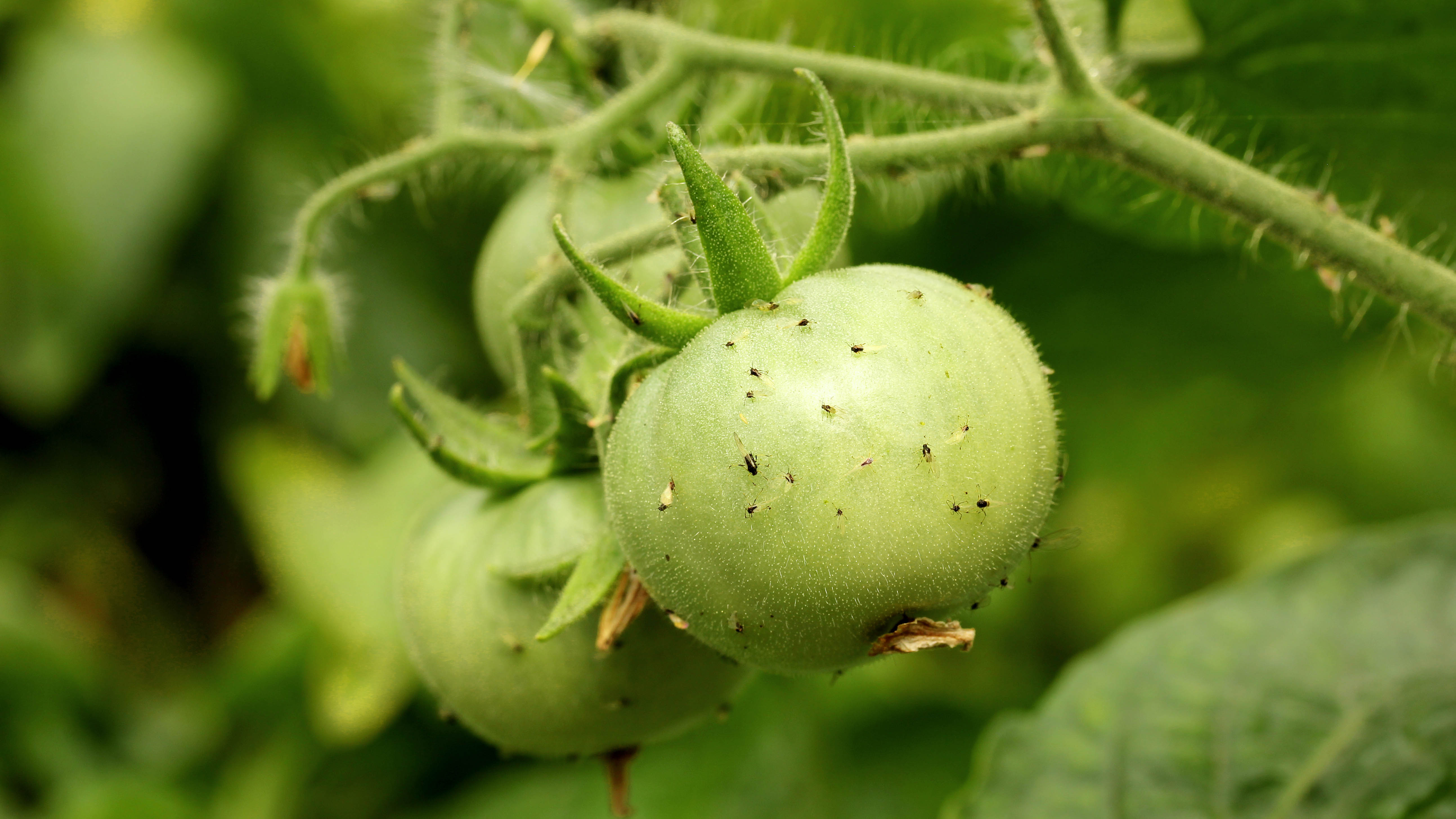
What a lot of people don’t realise is just how detrimental pests can be to the upkeep of a tomato plant’s health, so it’s paramount that you regularly inspect your plants for signs of pests or diseases.
“Isolate new plants for a few weeks to ensure they are free of pests before introducing them to your indoor garden,” says Lane. “Also, isolate any affected plants to prevent spreading.”
Aphids and whiteflies are the main ones to look out for, he adds.
10. Nip in the bud
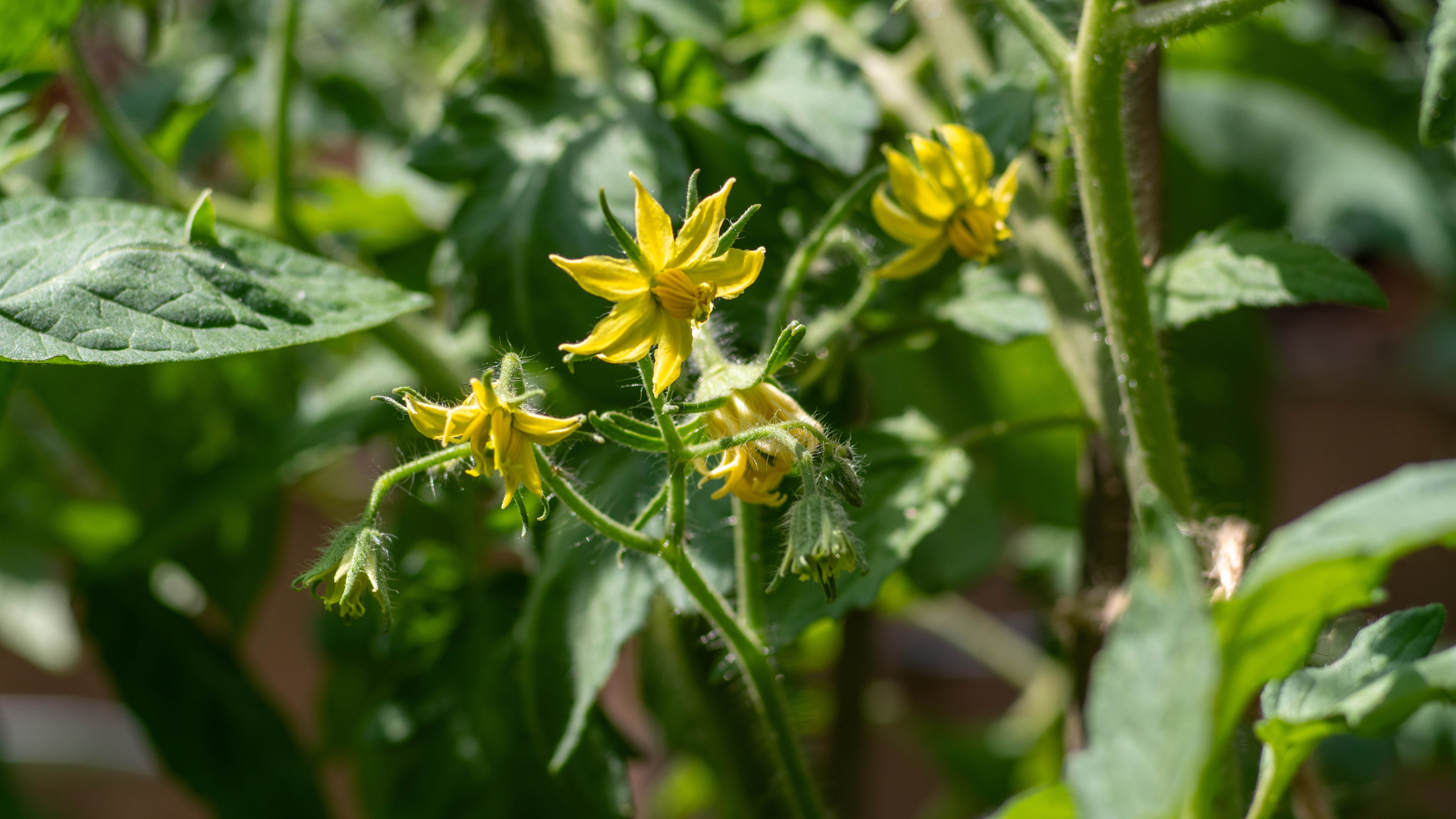
Throughout overwintering, your tomatoes may begin to flower. It might sound a bit morbid, but Waters highlights the importance of removing the flowers as they begin to grow as they can be detrimental to the health of the plant.
“This is because the plant will waste its energy keeping the flowers alive,” he says.
11. Not so fertiliser
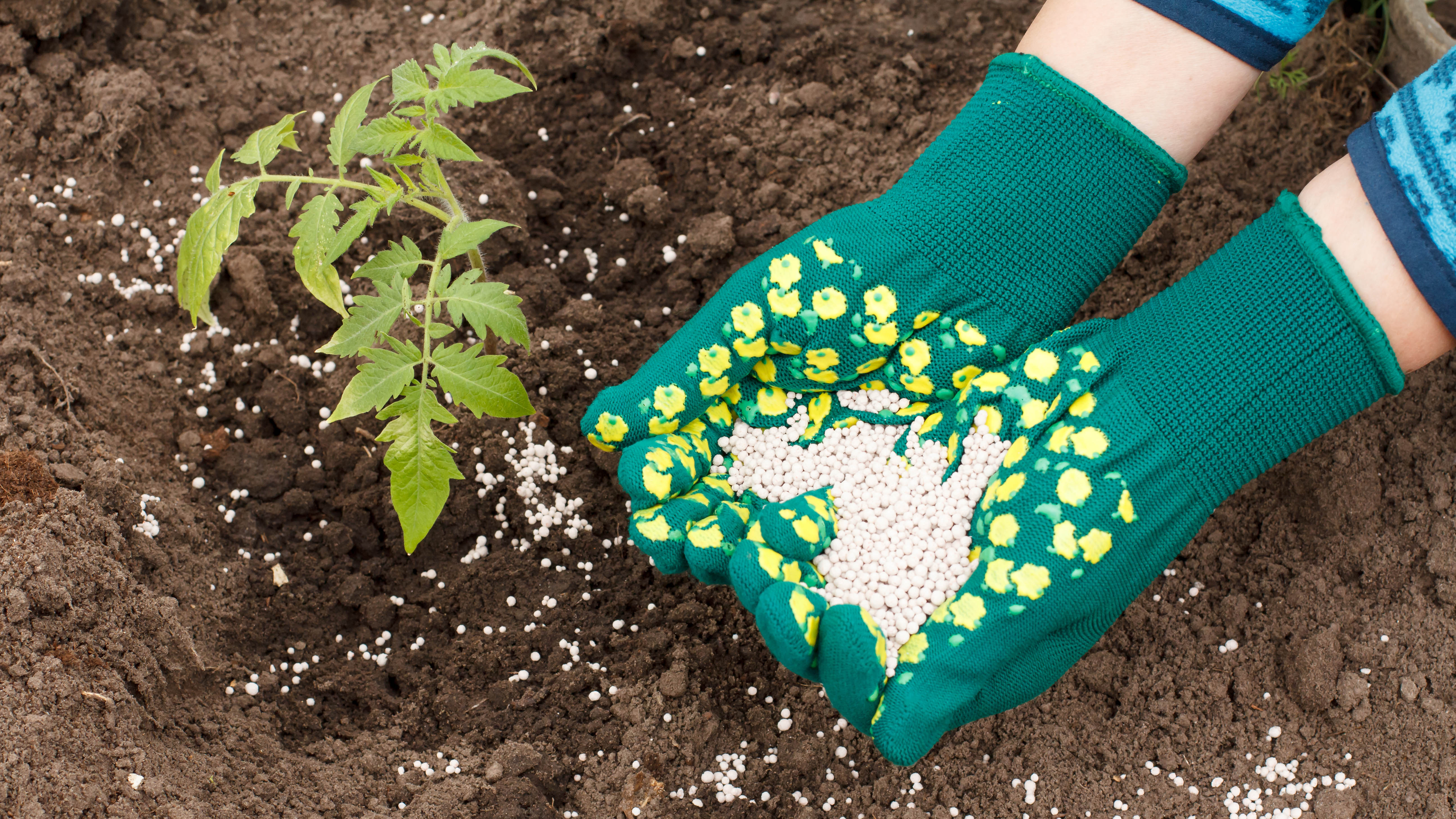
Finally, if your tomato plants have survived the winter - well done. Just don’t be tempted to move them back outside too early.
“Wait until the frost has fully passed and spring has sprung before you transfer your tomato plants back outside,” advises Waters. “I recommend waiting until mid-May before transferring your tomato plants back into your garden.”
Once you are ready to transfer your tomato plants back outside, be sure to thoroughly feed them with fertiliser to further encourage the growth of your tomato plant.
Overwintering tomato plants requires careful attention to detail, but by following the above tips, you can enjoy fresh tomatoes year-round - even during the colder months.







